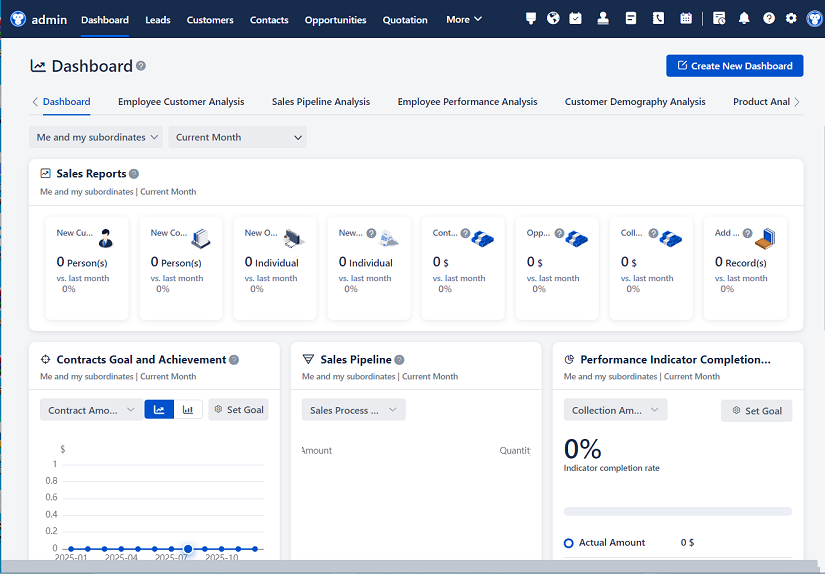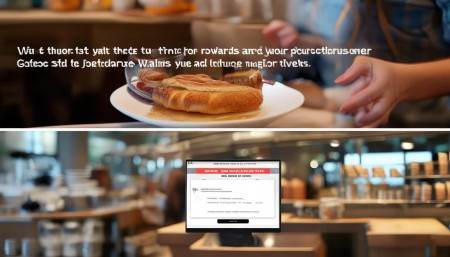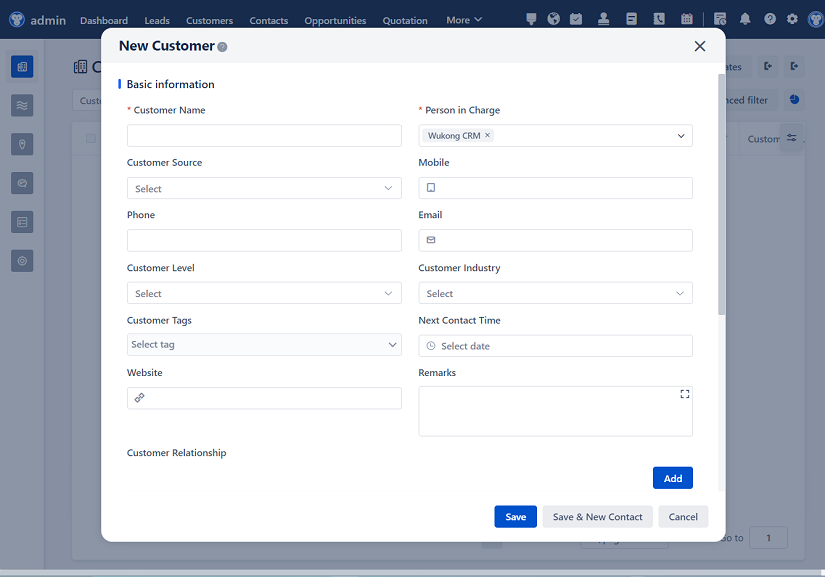
△Click on the top right corner to try Wukong CRM for free
Hey there! So, you're curious about the Customer Consumption Points Management System, huh? Well, let's dive right in and see what it's all about. Imagine you’re running a business, and you want to keep your customers coming back for more. That’s where this system comes in. It’s like having a super-smart way to reward your loyal customers and make them feel special.
First things first, let’s talk about why this system is so important. You know how it feels when you get a little something extra for being a good customer, right? Maybe it’s a free coffee after buying ten, or a discount on your next purchase. These little perks can really make a difference. They not only make customers happy but also encourage them to keep coming back. And that’s exactly what a points management system does—it helps businesses build stronger relationships with their customers by rewarding them for their loyalty.
Now, let’t break down how this system actually works. Picture this: every time a customer makes a purchase, they earn points. It’s kind of like collecting stickers as a kid, but instead of stickers, you get points. The more they buy, the more points they rack up. And these points aren’t just for show; they can be redeemed for all sorts of cool stuff. Think discounts, free products, or even exclusive experiences. It’s a win-win situation—customers get rewarded, and businesses get repeat customers.
But it’s not just about giving out points willy-nilly. There’s a whole strategy behind it. Businesses need to figure out what kind of rewards will really motivate their customers. For example, if you run a coffee shop, maybe offering a free pastry after a certain number of coffees would be a hit. Or if you have an online store, perhaps a discount on the next purchase could do the trick. The key is to understand what your customers value and then tailor the rewards accordingly.

Another important aspect is tracking and managing those points. This is where technology comes in. Most businesses use some kind of software to keep track of everything. It’s like having a digital ledger that records every transaction and the points earned. This way, both the business and the customer can easily see how many points they have and what they can redeem them for. It’s all about transparency and making the process as smooth as possible.
And speaking of transparency, communication is key. Customers need to know what they’re getting into. So, businesses should clearly explain how the points system works, how points are earned, and what they can be used for. This can be done through emails, in-store signage, or even a dedicated section on the company’s website. The goal is to make sure everyone is on the same page and that the system is easy to understand.
Now, let’s talk about the benefits. For customers, it’s pretty straightforward—they get rewarded for their loyalty. But for businesses, the benefits go beyond just keeping customers happy. A well-designed points system can actually drive sales. When customers know they’re close to earning a reward, they might be more inclined to make another purchase to reach that goal. Plus, it can help businesses gather valuable data. By tracking how customers earn and redeem points, businesses can gain insights into their buying habits and preferences. This information can be used to fine-tune marketing strategies and improve the overall customer experience.
Of course, no system is perfect, and there are a few challenges to consider. One of the biggest is making sure the rewards are meaningful. If the rewards are too small or not valuable enough, customers might not be motivated to participate. On the other hand, if the rewards are too generous, it could eat into the business’s profits. Finding the right balance is crucial. Another challenge is keeping the system simple. If it’s too complicated, customers might get frustrated and give up. So, it’s important to design a system that is easy to use and understand.

Let’s take a look at a real-world example. Starbucks, for instance, has a very successful points system called the Starbucks Rewards program. Customers earn stars (which are essentially points) for every purchase they make. These stars can be redeemed for free drinks, food, and even exclusive merchandise. The program is so popular that it has millions of active members. What makes it work so well is that the rewards are tangible and desirable, and the system is easy to use. Plus, Starbucks does a great job of communicating with their customers, sending regular updates and reminders about their rewards.

Another example is Sephora, the beauty retailer. Their Beauty Insider program is a bit more complex, but it’s still very effective. Customers earn points for every dollar spent, and these points can be redeemed for a wide range of rewards, from free samples to full-sized products. What’s unique about Sephora’s program is that it has different tiers based on how much a customer spends. The more you spend, the higher your tier, and the better the rewards. This creates a sense of exclusivity and encourages customers to spend more to reach the next level.
So, how do you set up a points management system for your own business? First, you need to define your goals. What do you want to achieve with this system? Is it to increase customer retention, boost sales, or gather data? Once you have a clear idea of your goals, you can start designing the system. Decide on the rules for earning and redeeming points, and choose the rewards that will be most appealing to your customers. Then, you’ll need to select the right technology to manage the system. There are plenty of software solutions out there, so do your research and find one that fits your needs and budget.
Once you have the system in place, it’s time to launch it. Make sure to communicate the details to your customers and train your staff on how to use the system. You might also want to run a promotional campaign to generate excitement and get people signed up. After the launch, it’s important to monitor the system and gather feedback. See how customers are responding and make adjustments as needed. Over time, you can refine the system to make it even more effective.
In the end, a well-designed points management system can be a powerful tool for building customer loyalty and driving sales. It’s all about creating a positive experience for your customers and showing them that you value their business. And who doesn’t love getting a little something extra for being a loyal customer?
Alright, I hope that gives you a good overview of the Customer Consumption Points Management System. Now, let me throw in a few questions to wrap things up:
-
What is the main purpose of a Customer Consumption Points Management System?
- The main purpose is to reward loyal customers and encourage repeat business, which ultimately helps to build stronger relationships and drive sales.
-
How do customers typically earn points in such a system?
- Customers usually earn points for every purchase they make. The more they buy, the more points they accumulate.

-
Why is it important to tailor the rewards to your specific customer base?

- Tailoring the rewards ensures that they are meaningful and valuable to your customers, which increases their motivation to participate and stay loyal.
-
What role does technology play in managing a points system?
- Technology, such as specialized software, helps to track and manage points, making the process transparent and easy for both the business and the customers.

-
Can you give an example of a successful points management system?
- Sure! Starbucks’ Rewards program is a great example. Customers earn stars for purchases, which can be redeemed for free drinks, food, and exclusive merchandise. The program is popular and effective because the rewards are desirable and the system is user-friendly.
-
What are some common challenges in implementing a points management system?
- Common challenges include finding the right balance between rewarding customers and maintaining profitability, and ensuring the system is simple and easy to use.
-
How can a points management system benefit a business beyond just customer loyalty?
- Besides fostering loyalty, a points system can drive sales, provide valuable customer data, and help businesses refine their marketing strategies and improve the overall customer experience.
I hope that helps! If you have any more questions, feel free to ask.
Related links:
Free trial of CRM
Understand CRM system
AI CRM Systems

△Click on the top right corner to try Wukong CRM for free